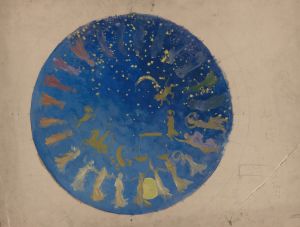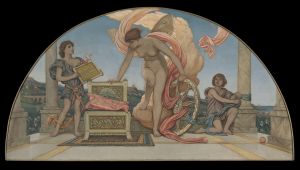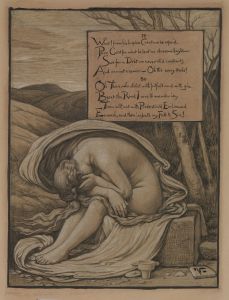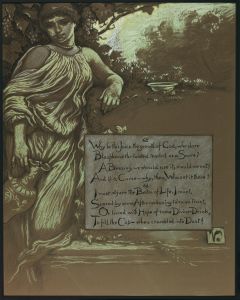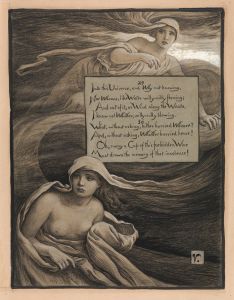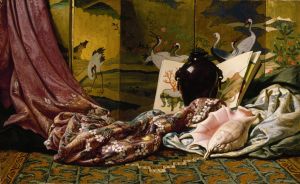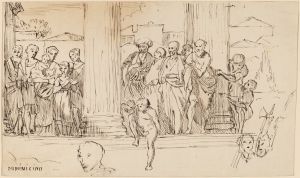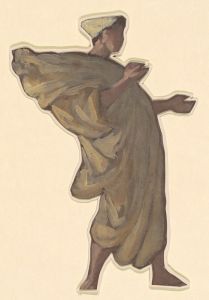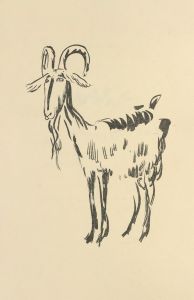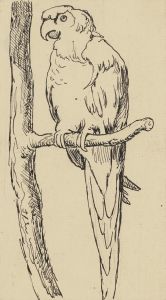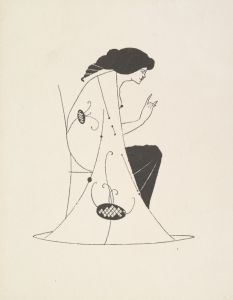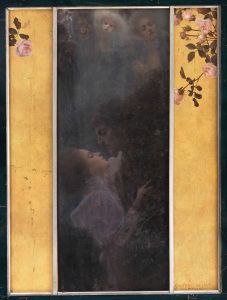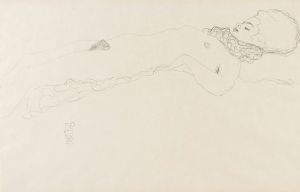
Archway with Woman
A hand-painted replica of Elihu Vedder’s masterpiece Archway with Woman, meticulously crafted by professional artists to capture the true essence of the original. Each piece is created with museum-quality canvas and rare mineral pigments, carefully painted by experienced artists with delicate brushstrokes and rich, layered colors to perfectly recreate the texture of the original artwork. Unlike machine-printed reproductions, this hand-painted version brings the painting to life, infused with the artist’s emotions and skill in every stroke. Whether for personal collection or home decoration, it instantly elevates the artistic atmosphere of any space.
"Archway with Woman" is a painting by the American artist Elihu Vedder, a prominent figure associated with the Symbolist movement in the 19th century. Vedder, born in 1836, was known for his mystical and allegorical works, often drawing inspiration from literature, mythology, and his own philosophical musings. This particular painting reflects his characteristic style, blending dreamlike imagery with a sense of mystery.
The artwork depicts a solitary female figure standing beneath an archway. The composition is marked by Vedder's attention to detail and his use of muted, earthy tones, which create an atmosphere of introspection and subtle drama. The archway itself serves as a framing device, drawing the viewer's focus to the woman while also suggesting themes of transition or passage. The figure's pose and expression convey a sense of quiet contemplation, though the exact narrative or symbolism remains open to interpretation.
Elihu Vedder spent much of his career in Italy, where he was influenced by the classical art and architecture of the region. This influence is evident in "Archway with Woman," as the architectural elements in the painting echo the forms and motifs of ancient Roman and Renaissance structures. Vedder's time in Italy also allowed him to engage with the broader Symbolist movement in Europe, which sought to express ideas and emotions through symbolic imagery rather than direct representation.
While specific details about the creation and provenance of "Archway with Woman" are not widely documented, the painting is consistent with Vedder's broader body of work, which often explored themes of mortality, spirituality, and the human condition. His art frequently invites viewers to ponder deeper meanings, and this piece is no exception.
Elihu Vedder's contributions to art extend beyond painting; he is perhaps best known for his illustrations for the 1884 edition of Edward FitzGerald's translation of "The Rubáiyát of Omar Khayyám." These illustrations solidified his reputation as a master of allegorical and symbolic art. "Archway with Woman" stands as a testament to Vedder's ability to merge technical skill with evocative storytelling, creating works that continue to captivate audiences.
As with many of Vedder's works, "Archway with Woman" reflects the artist's unique vision and his commitment to exploring the interplay between the physical and the metaphysical. The painting remains an example of his enduring legacy in the world of 19th-century art.





